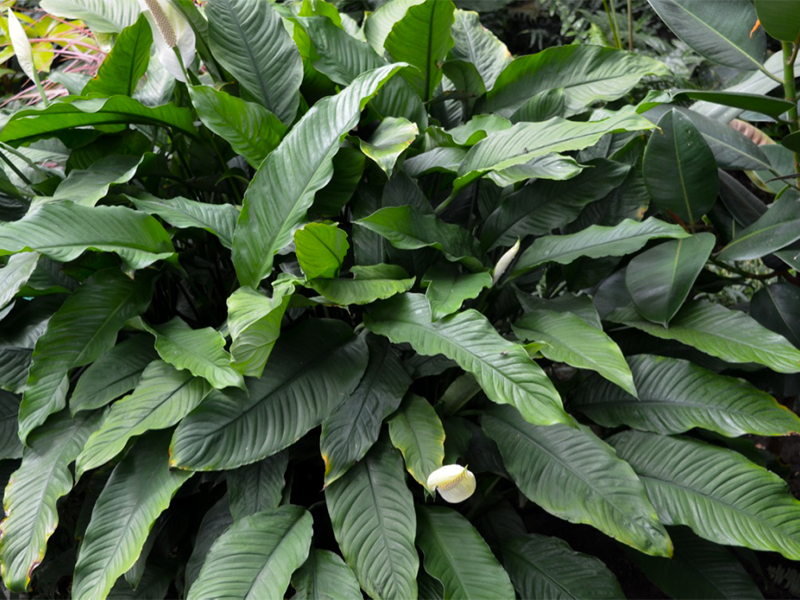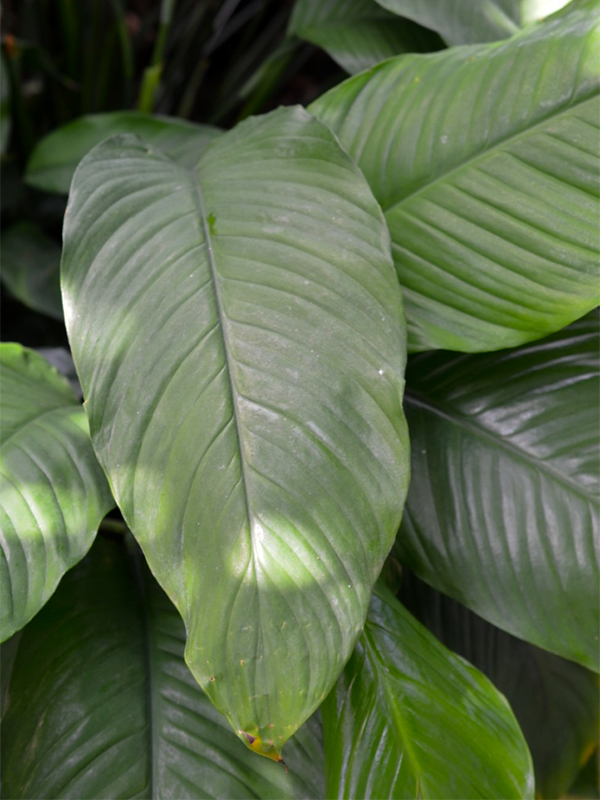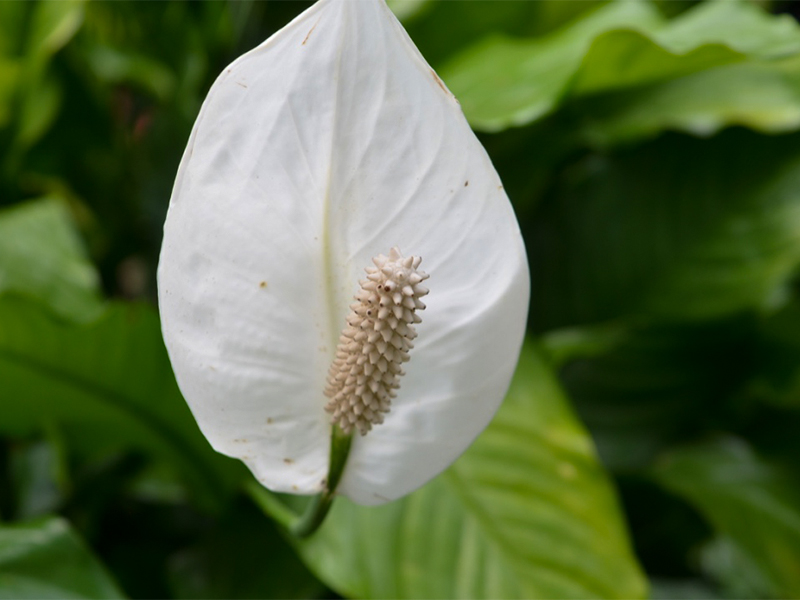Spathiphyllum wallisii (Peace Lily)
Botanical Information
| Family | Araceae |
| Genus | Spathiphyllum |
| Species | wallisii |
| Category | Perennials, Tropicals |
| Origin | South America. |
| Ethnobotanical Uses Disclaimer | Plant contains calcium oxalates, so it is toxic to humans, cats, and dogs. Sap is also a skin irritant. Keep away from children and pets, and wash hands thoroughly after handling. Removes airborne toxins such as formaldehyde, ammonia and carbon monoxide when grown indoors. |
Details
| USDA Hardiness Zone | 10b - 12 |
| USDA Hardiness Ref. | |
| Canadian Hardiness Zone | Requires cold season protection under glass. |
| Canada Hardiness Ref. | |
| RHS Hardiness Zone | H1b - H2 |
| RHS Hardiness Ref. | |
| Temperature (°C) | 1 - 15 |
| Temperature (°F) | 33.8 - 59 |
| Height | Up to 90 cm |
| Growth | Medium |
| Flowering Period | May, June, July, August |
Description and Growing Information
| Landscape | Shady borders of gardens or as a houseplant. Thrives better under average indoor conditions than many other houseplants. Plant commonly grown indoors for it’s ability to remove toxins from the air. |
| Propagation | By division of clumps. |
| Cultivation | Grows best in partial to full shade with acidic, well-drained soil. Water thoroughly, but do not allow soil to become soggy. Reduce watering in autumn and winter. Protect from high winds and direct sunlight. |
| Pests | Mealybugs. |
| Notable Specimens | Centennial Conservatory, Thunder Bay, Ontario, Canada. |
| Leaf Description | Stiletto-shaped or elliptic, wide, and strongly veined, arching away from the plant. Leaves grow up to 15 cm long and 8 cm wide growing on 15 cm long stalks. |
| Flower Description | Fragrant flowers are produced from the centre of the plant on 20 - 25 cm long stalks. Bloom consists of a single spathe that surrounds the protruding spadix that is densely covered in tiny, true flowers. |
| Colour Description | Leaves are dark green and the flowers are white. |
| Texture Description | Leaves are glossy. |


